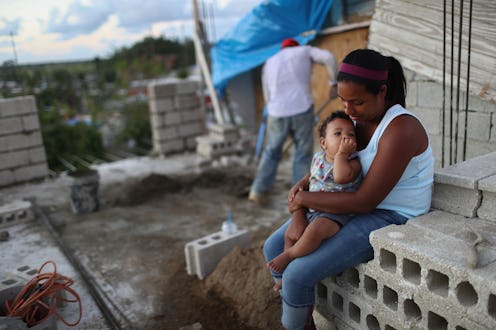
According to a Centro de Periodismo Investigativo (CPI) report on Tuesday, an uptick in gender violence in post-Hurricane Maria Puerto Rico has shaken the region. The hurricane hit the United States territory in September 2017 and devastated local businesses, hospitals, schools, and residential areas but it has also reportedly worsened violence against local women.
For Puerto Rico, this reported increase in gender violence is exceptionally alarming given the reported pattern of attacks on women in the region. In June 2012, the American Civil Liberties Union reported, "Puerto Rico has the highest per capita rate in the world of women over 14 killed by their partners." In its Tuesday report, CPI said that gender violence has only gotten worse. CPI referenced a 2016 report from the newspaper Primera Hora and noted that violence against women in Puerto Rico has only increased since 2012.
In spite of the reported increase in gender violence, CPI noted that it was difficult to definitively point out the rise in violence due to Maria-induced collapse in local agencies and official infrastructure. CPI journalists Claire Tighe and Lauren Gurley wrote that malfunction in the region's infrastructure brought on by the hurricane in addition to "unreliable statistics" from state sources has ultimately caused significant trouble in conclusively highlighting gender violence against Puerto Rican women.
The report did, however, share an interactive tableau that spelled out the reported spike in gender violence over the course of 2016 and 2017. It noted that there were 168 rape cases in 2016 and 209 rape cases in 2017 based on statistics provided by the Bureau of Puerto Rico Police.
More often than not, research into natural disasters like hurricanes and floods tend to overlook how such wide-scale calamities affect women differently. But it's an issue that some scholars have highlighted, including John Jay College professor Jodie Roure who spoke on CUNY TV on gender violence in Puerto Rico after Hurricane Maria in last February. Roure noted that there had been a fourfold uptick in domestic violence calls made to emergency centers.
"With any natural disaster, globally, considering climate change, we're going to be seeing [gender violence] increasingly," Roure said. She pointed to the "lack of access to food and electricity" that "exacerbated stress" in local families. According to Roure, local shelters that otherwise provide refuge to vulnerable women were full after Hurricane Maria, leaving women exposed to potentially violent partners. "Shelters [in Puerto Rico] were full, but many fences were down and they weren’t secure," Roure said.
While speaking on the issue of gender inequality in Puerto Rico in October, University of Oklahoma's assistant professor of education policy Mirelsie Velazquez told Slate that "all [Hurricane Maria] did was heighten the everyday issues of life on the island."
As stated before, CPI's reported gender violence is not an entirely new development for the hurricane-ravaged island. Studies like that from ACLU show that inequality runs deep in the region — and at the expense of local women and girls. In its 2012 study, ACLU highlighted the issue of domestic violence going unreported due to faulty official systems in Puerto Rico. The report specifically named the Puerto Rico Police Department (PRPD) and said that it "systematically" failed to shield vulnerable victims from domestic violence. ACLU said that the PRPD failed to adequately inform local women of the legal options they can and should pursue in the face of violence.
In addition to highlighting attacks against women in Puerto Rico after Hurricane Maria, CPI's report reinforces the broader need to study the link between natural disasters and gender violence. Perhaps with CPI's report, disaster relief centers can learn essential information from experts to meet the pressing needs of women trying to flee both the havoc brought on by natural calamities as well as the terror of domestic violence.